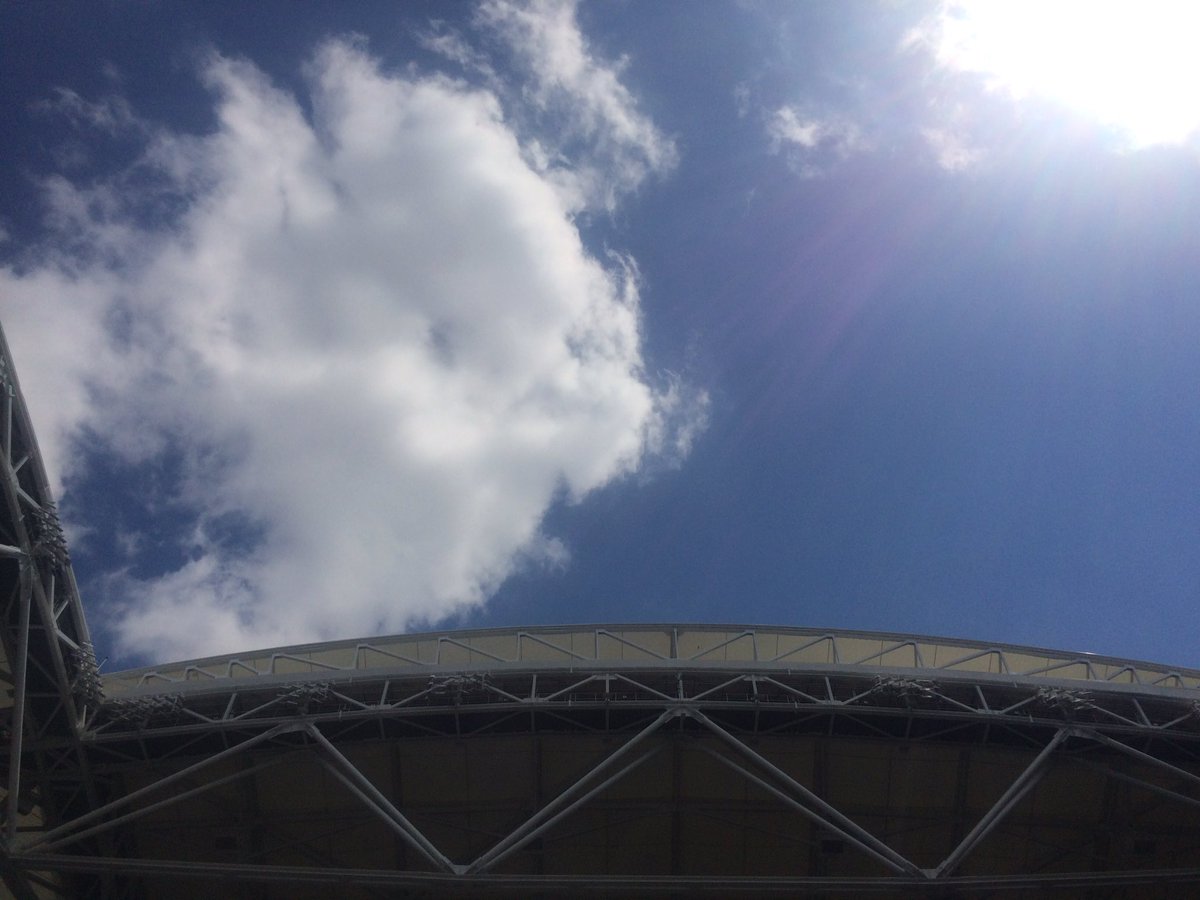
NEW YORK — When God said, ‘Let there be light,” it presumably only took him one try.
For Billie Jean King, it required three.
The tennis legend had to push a button three times Tuesday morning before the new retractable roof inside Arthur Ashe Stadium at the USTA Billie Jean King National Tennis Center actually opened — providing a window into the sunlight and blue sky above.
The roof over the 23,771-capacity stadium is built to close or open in under seven minutes. It closed with ease during the demonstration, but a bemused crowd of several hundred media and invited guests waited patiently for several minutes while they were told that technicians inside the Stadium were working on the glitch after King’s first two attempts to open the roof failed.
“The USTA has always strived to move forward as an organization, to innovate and think boldly, and the transformation of the USTA Billie Jean King National Tennis Center falls directly in line with that goal,” USTA Chairman of the Board and President Katrina Adams said in a statement.
The roof will be ready when the U.S Open begins on Aug. 29. The men’s final was delayed a day until Monday because of rain for five straight years from 2008-12.
Ironically, five-time US Open champion Roger Federer won’t be on hand to play in the new stadium after he shut himself down for the remainder of 2016 due to knee problems. Federer, who lost in last year’s final to Novak Djokovic, thrives in indoor conditions, where his winning percentage is 80 percent, just a notch below his outdoor winning percentage of 82 percent.
USTA officials had long maintained that adding a roof over Ashe wasn’t feasible. But in 2013, architectural firm Rossetti drew up a workable plan.
“Here at the Billie Jean Tennis Center, we are making the impossible happen,” USTA executive director Gordon Smith said.
Wimbledon and the Australian Open already have retractable roofs over the main stadiums. French Open organizers also plan to add one.
The roof is expected to be used only for rain – unlike the Australian Open, which also closes its roof in cases of extreme heat. That roof took two years to complete and cost $150 million.
Ashe’s retractable roof features two panels atop a 6,500-ton steel superstructure and is covered to provide shade for the spectators. Some 360 LED sports lights will illuminate the roof and stadium when closed.
“The complexity is mind-boggling because frankly, as you watch the roof in action, it’s what you don’t see which is fascinating,” Rossetti President Matt Rossetti said.
The Open also features a new Grandstand Stadium that features 8, 125 seats — an addition of more than 2,000 seats over the capacity of the beloved old Grandstand.
The new Grandstand is located 10 feet below the ground and looks circular to the naked eye but is actually a hexadecagon (16 sides).
Next up at the US Open is tearing down the 10,000-seat Louis Armstrong Stadium after this year’s tournament. Its replacement will seat 14,000 people and also have a retractable roof as well.
(The AP’s Samantha Pell contributed reporting)





